
Advantages of menstrual cups
They are not chemically produced and contain no toxins, as they are made from medical silicone.
Even the smallest cup has significantly more capacity than the largest tampon. This means that you have to change the cup much less often. At the same time, the medical silicone ensures that you can keep the cup in your body for longer without it becoming a problem. In comparison, tampons should be changed after 4 to 6 hours at the latest, otherwise the risk of developing toxic shock syndrome increases.
As the cups do not absorb the menstrual blood but collect it, they do not dry out the vagina and maintain the natural vaginal flora.
A cup can be worn for up to 10 years. This not only saves money but also a lot of waste.
The menstrual cup is suitable for every woman. No matter whether you have particularly strong or particularly weak bleeding, whether you are generally very sensitive and prone to infections or whether you simply do not want to be restricted during your period. Everyone can be happy with the Menstrual Cup.
Facts and estimated values
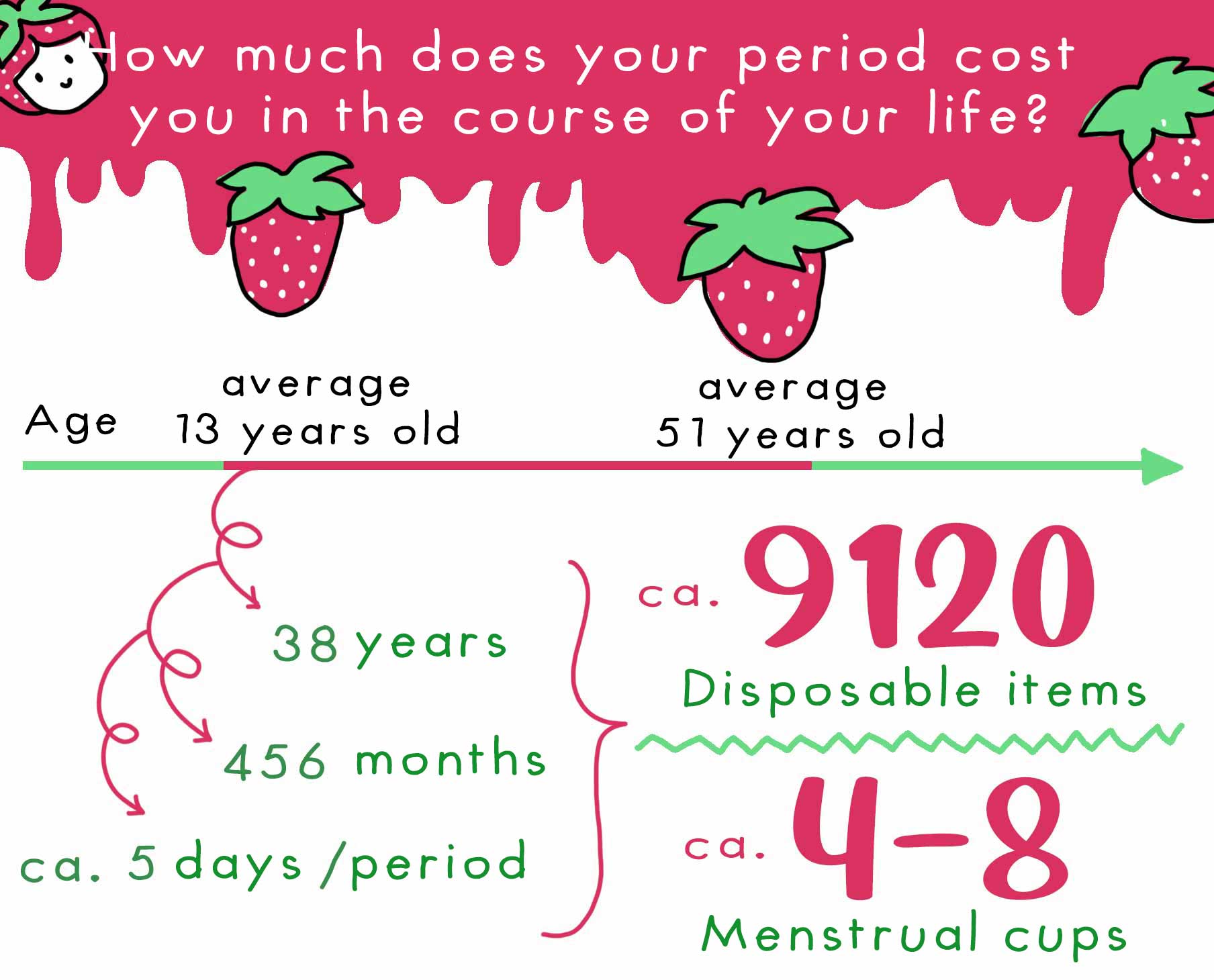
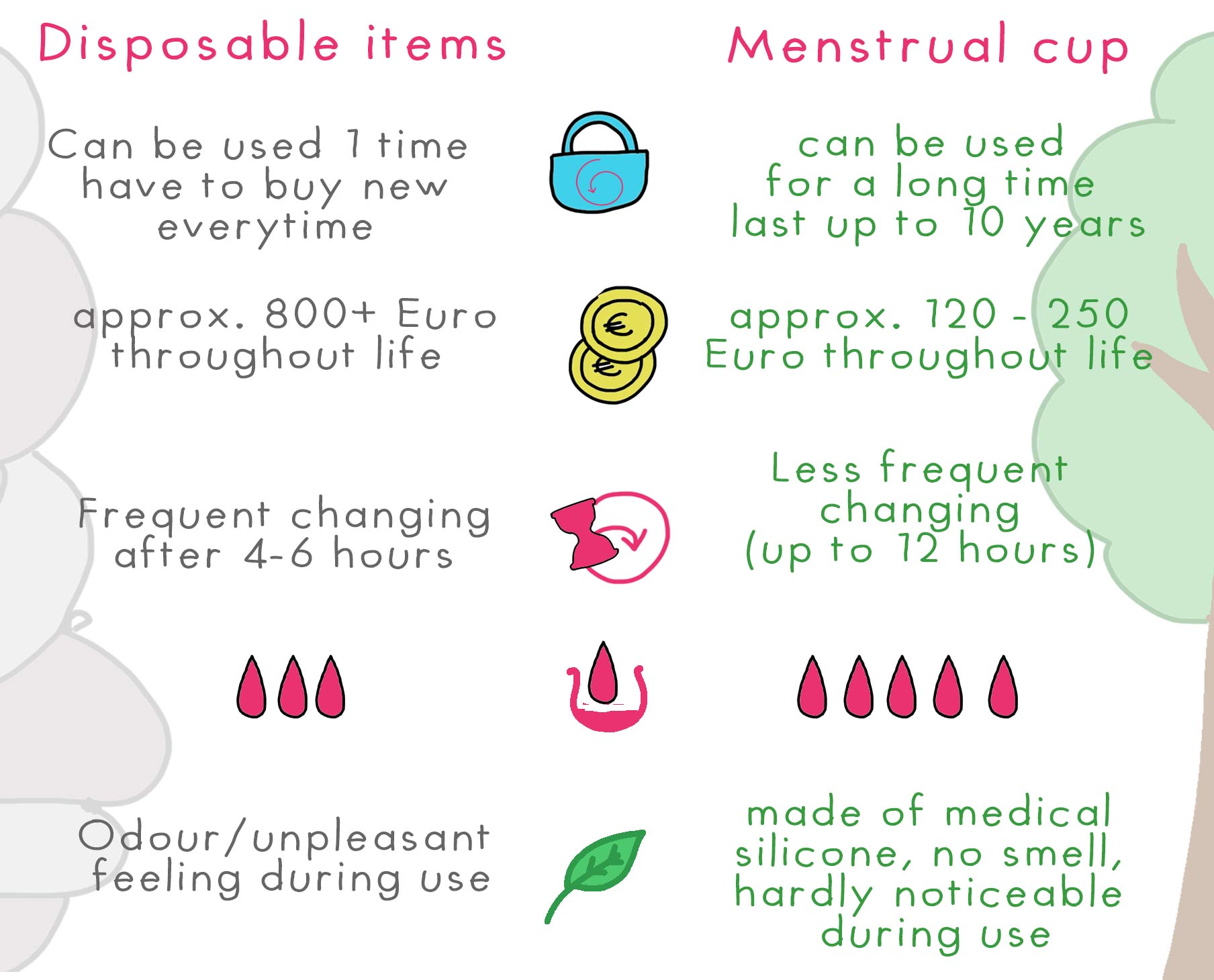
How do I use a menstrual cup?
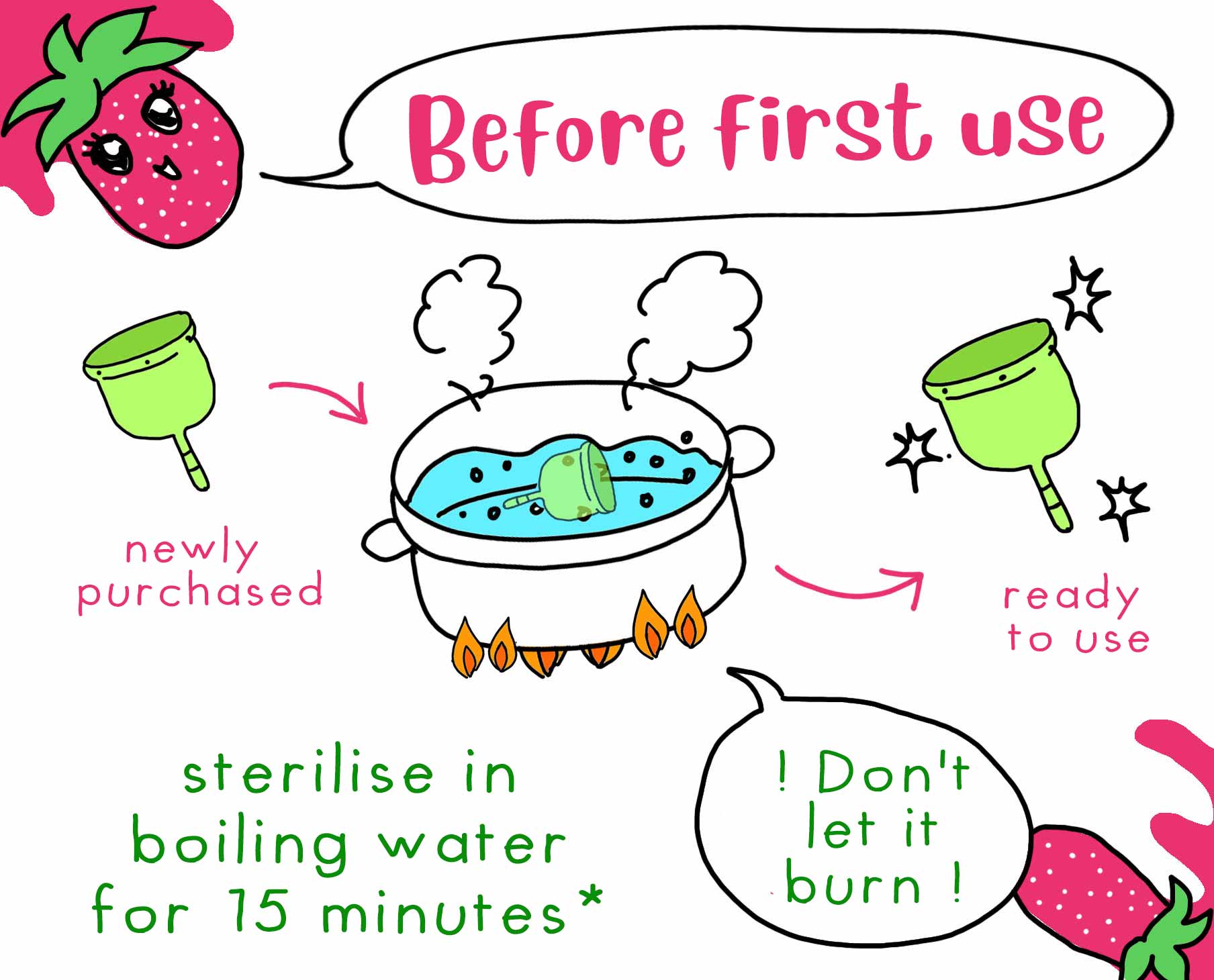
Important before the first use!
* For boiling out: a clean pot is sufficient. Then cover the cup completely with water and bring the water to the boil.
* The cup should be boiled for 15 minutes at least to remove any production residue, dust, or similar.
* Handy advice: place the cup between the metal rods of a whisk or a plate to prevent direct contact between the cup and the bottom of the pot, making it difficult to burn.
Boiling and sterilisation
As the cup is reusable, it must be cleaned so that you can reuse right away when needed. But how do you clean the cup, without soap or other products that affect the natural vaginal flora? To clean it, sterilize the cup in boiling water (doctors also clean their equipment with a very similar principle). The temperature of the boiling water ensures that bacteria or other troublemakers cannot survive on the cup and thus cannot enter the vagina.
You should boil the cup either immediately after the period is over or just before it starts again. A single boil, in the meantime, is quite sufficient.
As with the first use, a clean pot with enough water is sufficient for boiling. The cup should boil in the bubbling water for at least 5 minutes (except for first use or it might lead to diseases in the vaginal area). It is important to boil the cup under supervision so that it does not burn.
If you don't have a pot that you want to or can use for boiling, it is also possible to boil the cup in the microwave. To do this, take a sufficiently large and tall microwave-safe container, place the cup in the container and cover everything with water. Set the microwave (approx. 8 minutes) and watch when the water starts to boil. Once the water boils, 5 more minutes are enough.
To prevent boiling when sterilizing the cup in the microwave, place a lid on top of the jar. Do not close it off completely, however.
Inserting the cup
Before insertion, the cup must be folded. There are different ways to fold the cup. Here we show you how to do it.The right fit
The menstrual cup needs to be fully inserted, sometimes a stem, ring or ladder can stick out of the vagina, like on the Merula Cup. If this does not bother you, you can of course continue to wear it. If the stem bothers you, it can be cut off (please file off the cut edges so you don't hurt yourself).The cup should sit in front of your cervix so that everything can be collected. If you have inserted the cup correctly, you will feel a slight pop, which indicates that the cup has unfolded completely. You can also feel whether the cup is completely unfolded by running your finger around the cup. If the cup is opened properly, slight vacuum is created. This not only makes it easier for the menstrual blood to flow out but also prevents the cup from slipping. At the same time, the vacuum relieves pain during menstruation for some women.
Remove and empty the cup
To empty the cup, reach for it and carefully pull it out. Please never simply pull the stem or the ring of the cup! They are only for orientation. Always release the vacuum beforehand by pushing in the side of the cup with your finger and letting air in. If you do not release the vacuum beforehand, removing the cup can be very painful. IUD wearers, in particular, must be careful to release the vacuum so that the IUD cannot be moved or even pulled out by the return thread. You can find more tips for IUD users in our FAQs.
You can simply pour the collected menstrual blood into the toilet. Afterwards, it's enough to wipe out the cup with toilet paper and put it straight back in. If you have a sink nearby, you can also rinse the cup with cold (!) water.
On the way with your cup
When out and about, it is just as easy to remove the cup, pour it out and wipe it clean. In public toilets, there is usually no washbasin nearby the toilet so you don't have this option. If you still want to rinse your cup, it is advisable to have a small bottle of water in your handbag, which you can then use to rinse the cup over the toilet. However, as already mentioned, it is also sufficient to wipe the cup.
Storage
Always keep your menstrual cup away from light. Also, make sure that the menstrual cup is stored in a breathable bag so that air always gets to the cup. The etuis provided are all breathable. However, any homemade cotton bag or small wet bags are also suitable.
When should I not use a cup?
The only rule is: as soon as you can use a tampon, you can use a cup without a problem. Do not use a cup if you have postpartum or injuries inside the vagina! If you are unsure, always ask your doctor before using a cup or tampon!Which menstrual cup fits me?
Every person is different. That's why every woman is different and every vagina is different too. There are various cups for the different needs of a woman. The multitude of cups currently on the market can be confusing, especially if you are new to the field. To find a suitable cup, three factors are important - first and foremost the length of the cup, then the hardness and the capacity of the cup.
How long should my menstrual cup be?
The length of the cup is probably the most important criteria: if your cup is too long, it may rub against the vaginal entrance. If it is too short, you may find it difficult to reach the cup when changing because it is too high up.
The length of the cup depends on the position of your cervix during menstruation. To be sure, check the position of your cervix every day (preferably in the morning and evening). Use your index finger to feel your cervix and figure out the distance between your vaginal opening and your cervix. You can use the illustration below as a guide. If your cervix is quite low, you need a short cup, if it is rather high, it is especially important that you choose a long cup.
It is important that you consider the length of the cup without the stem because the stem is only for orientation and must not be used for retrieval.
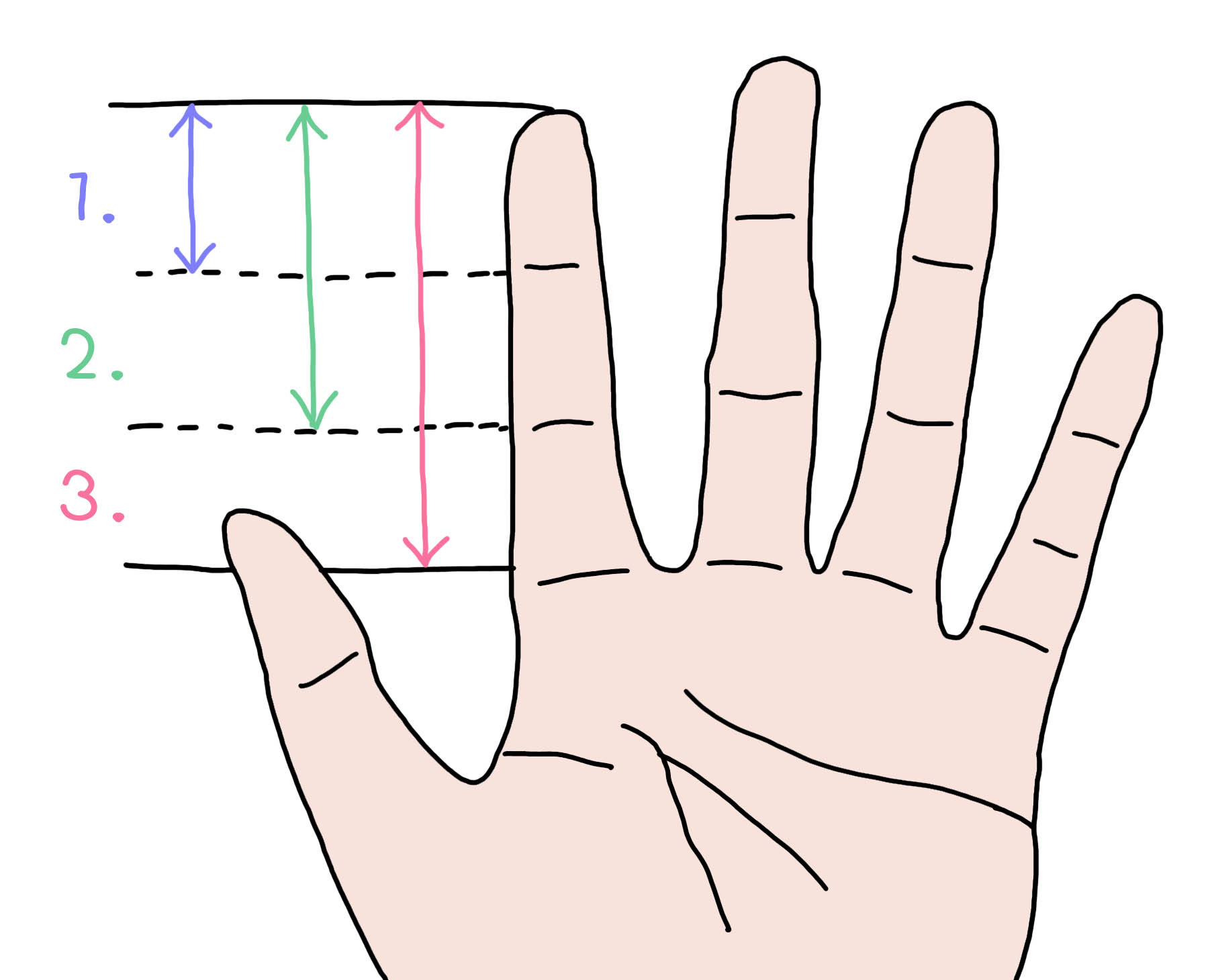
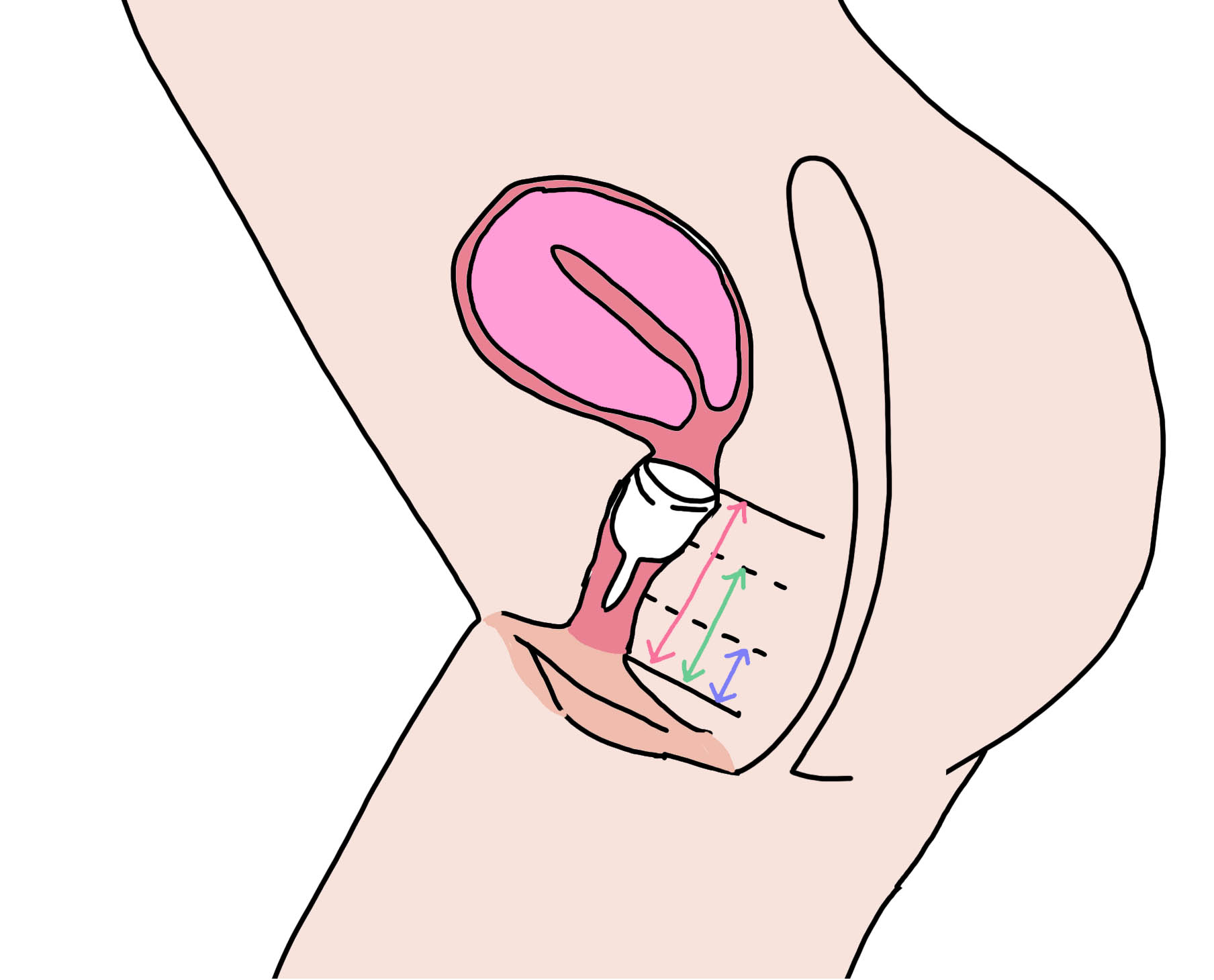
Which degree of hardness do I need?
To prevent a cup that is too soft from being unintentionally compressed and leaking, or to prevent a cup that is too hard from simply slipping out, it is important that you choose the right degree of hardness of the cup according to your tissue condition. Your pelvic floor muscles are important for the correct fit and hold of the cup: the better trained your pelvic floor is, the harder and more dimensionally stable the cup can be. But how can you assess the strength of a musculature that you can only partially influence at will? Ask yourself the following questions:
If you can interrupt your stream without any problems when you go to the toilet, if you can consciously enclose your finger with your pelvic floor muscles, then your pelvic floor is quite well trained. If you also do a lot of sport (especially horse riding or strengthening exercises, especially for the lower torso), you can assume that your pelvic floor muscles are really good. To avoid squeezing the cup, you need a cup that is quite hard.
Have you already had children?
If you've had children recently, your pelvic floor has probably been affected to some extent and is no longer as firm as it was before. Choose a rather soft cup. If you have had a baby and your pelvic floor is being strengthened again, for example, thanks to a regression course, you can choose a soft to medium-hard cup. However, the fact that you haven't had children doesn't necessarily mean that your pelvic floor is very well trained. Women who have not had children can also have a rather weak pelvic floor.
Do you occasionally lose a droplet when you laugh, sneeze or jump?
If this is the case, your pelvic floor is not very well trained and you should choose a soft cup.
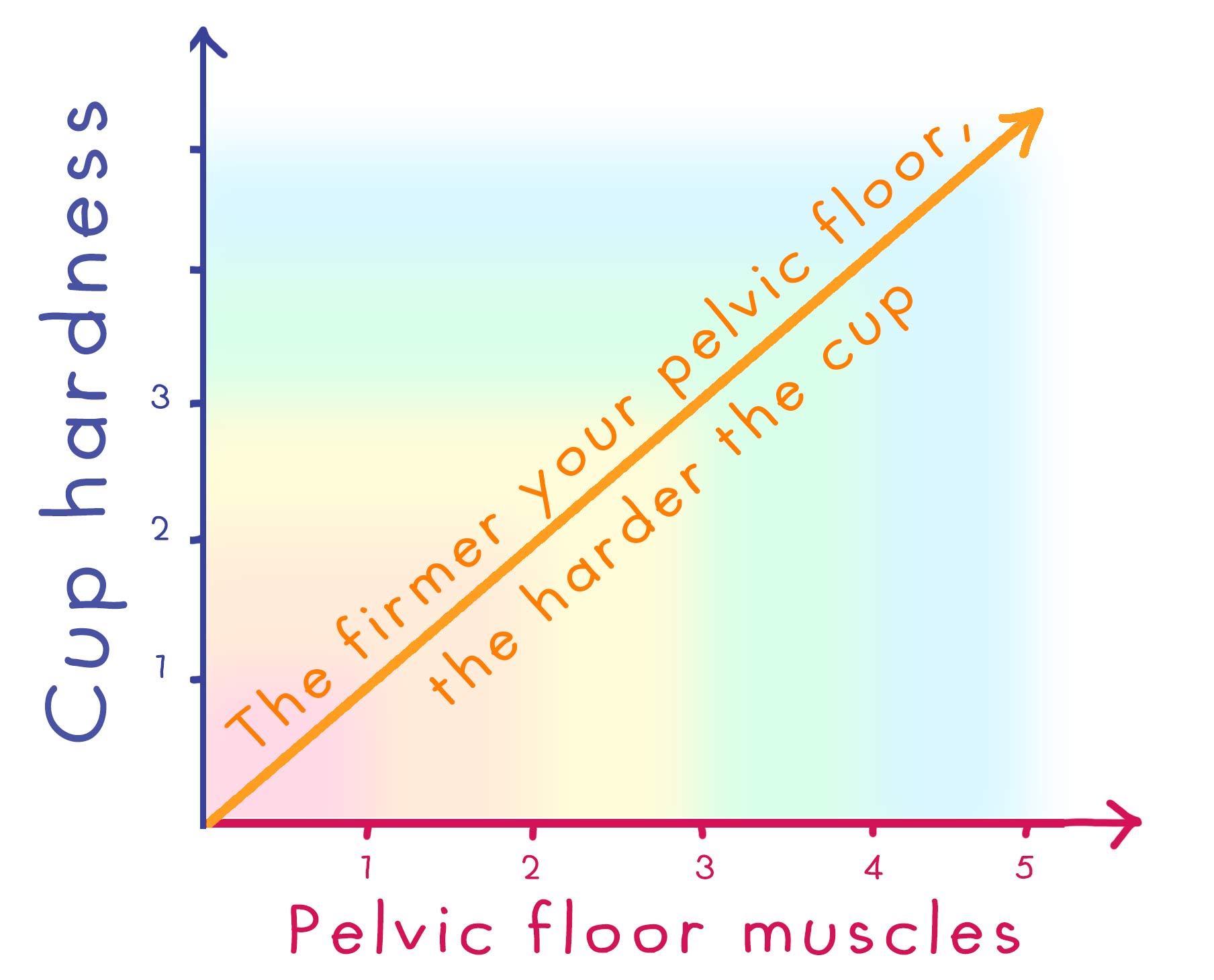
What capacity/what size do I need?
The cup size you need depends mainly on how heavy your bleeding normally is. The larger the cup, the more volume it has.
However, as a general rule, the smallest cup already has more capacity than the largest tampon. To find out which size you need, you can use the standard tampon sizes as a guide: If you tend to use the very small tampons because your bleeding is not really heavy, a cup with a small volume is sufficient. The heavier your bleeding, the larger the cup should be.
However, the cup size is not the decisive point, because - as already mentioned - even the smallest cup has a similar volume to the largest tampon. So if you choose a small cup that otherwise suits you, the worst that could happen is that you have to empty the cup more often.
Tampon sizes compared to cup capacity
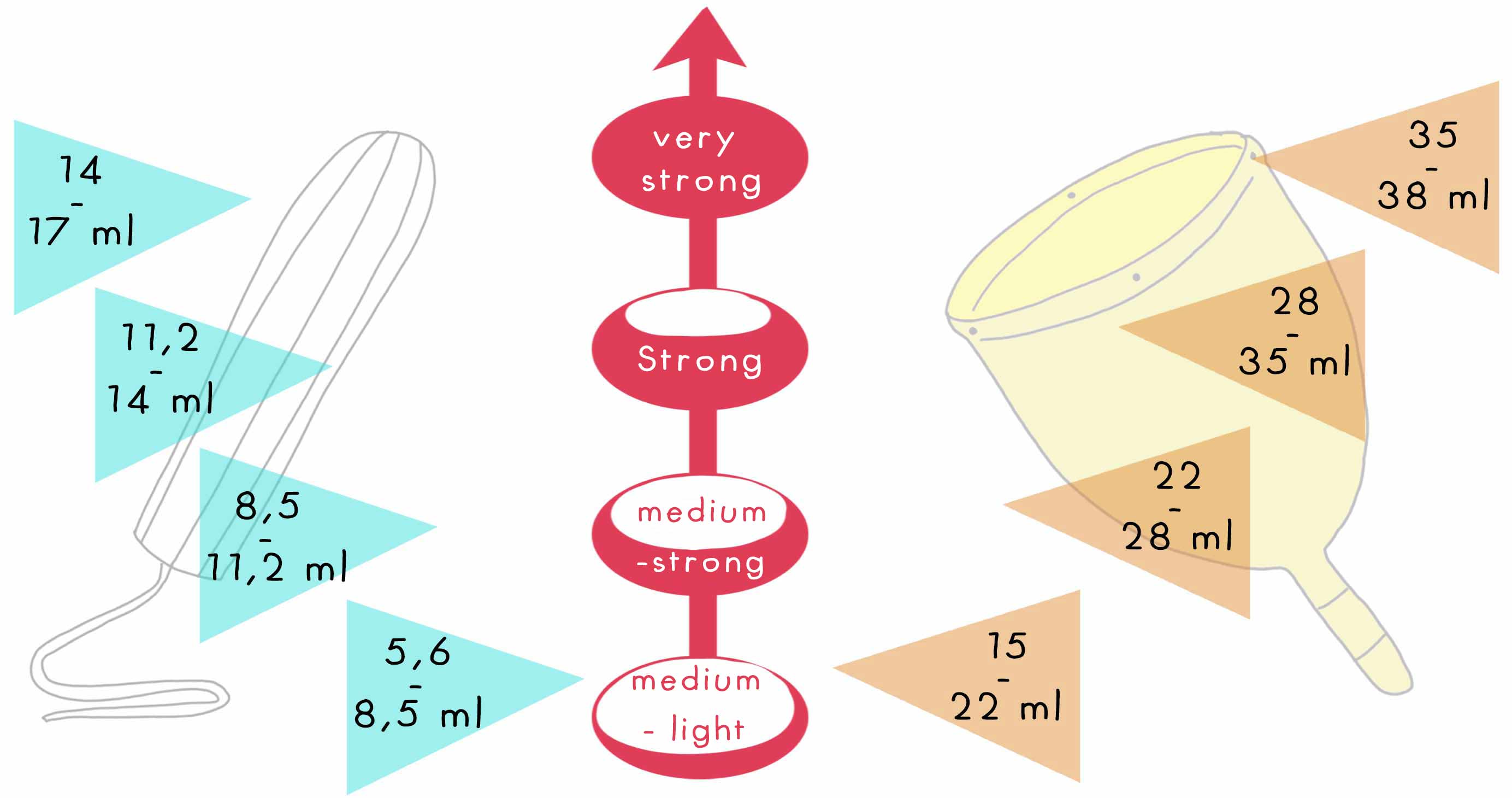
Do you still have questions? You can find more FAQ-Teil tips in our FAQ section.
Folding the menstrual cup
Before a menstrual cup is inserted, it has to be folded. There are different folding techniques. Here we show you the three most popular methods. Don't forget to wash your hands before inserting the cup.
C-folding / the heart
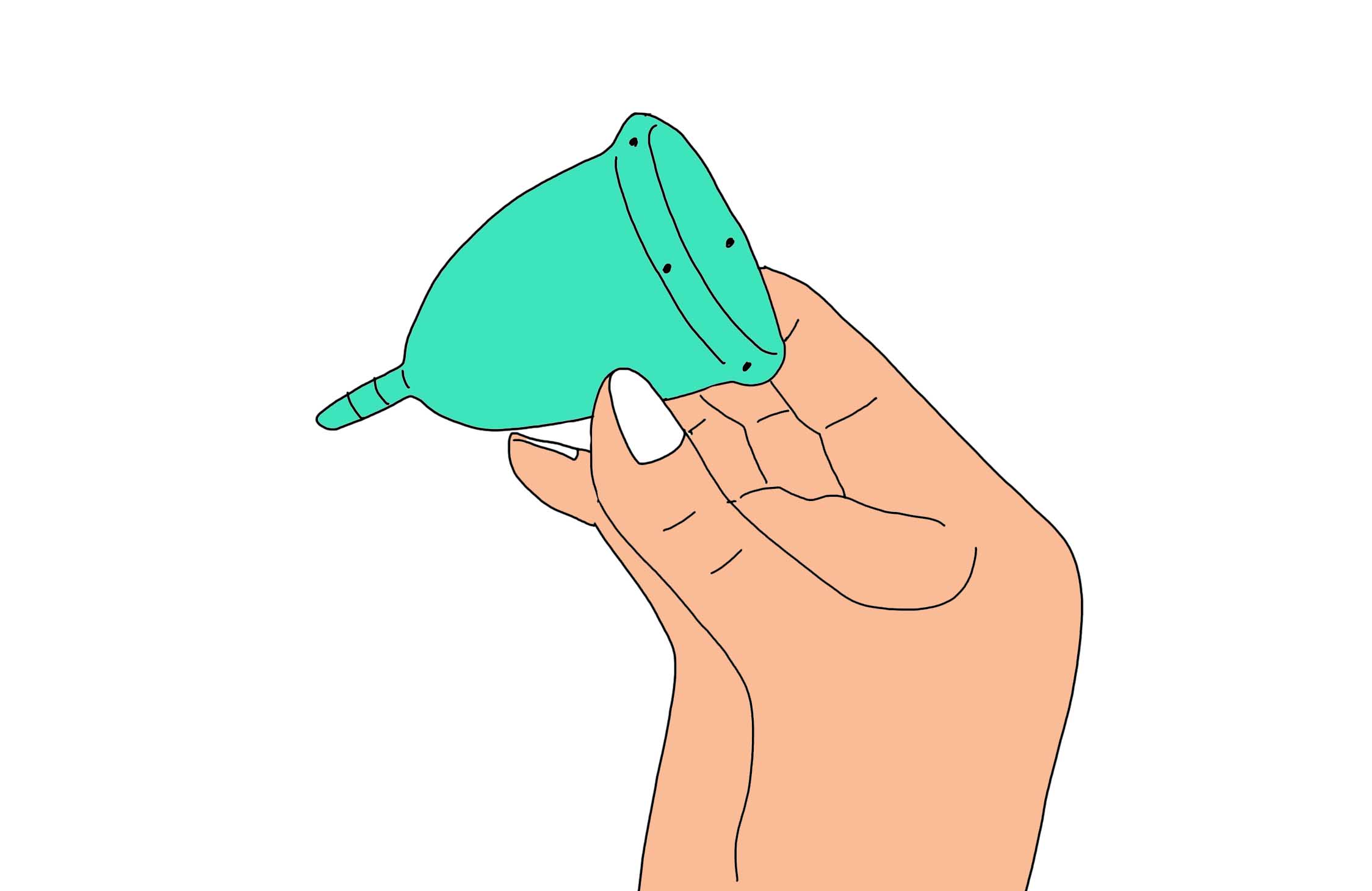
Grab your cup.
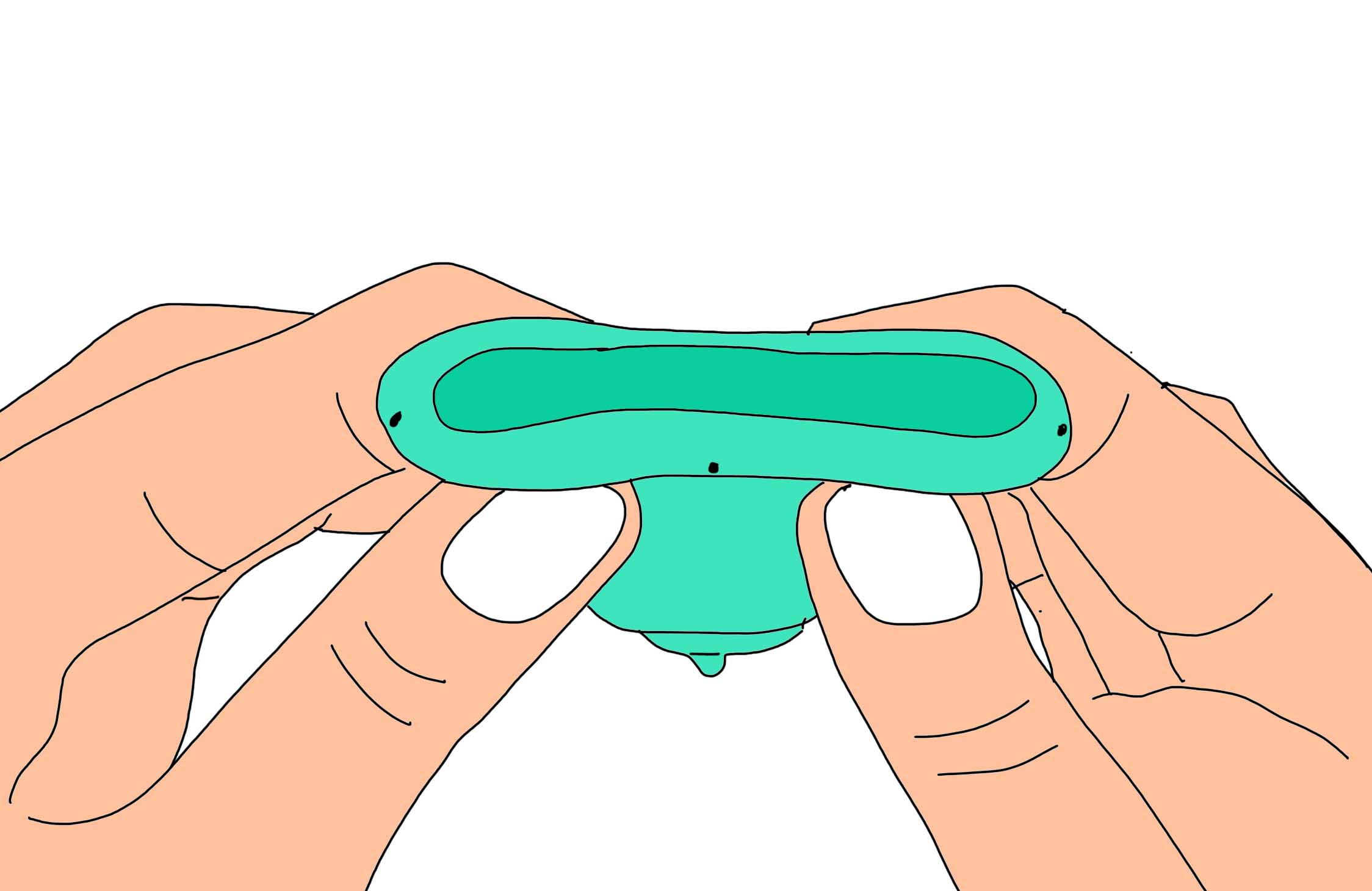
Fold it with both thumbs and forefingers.
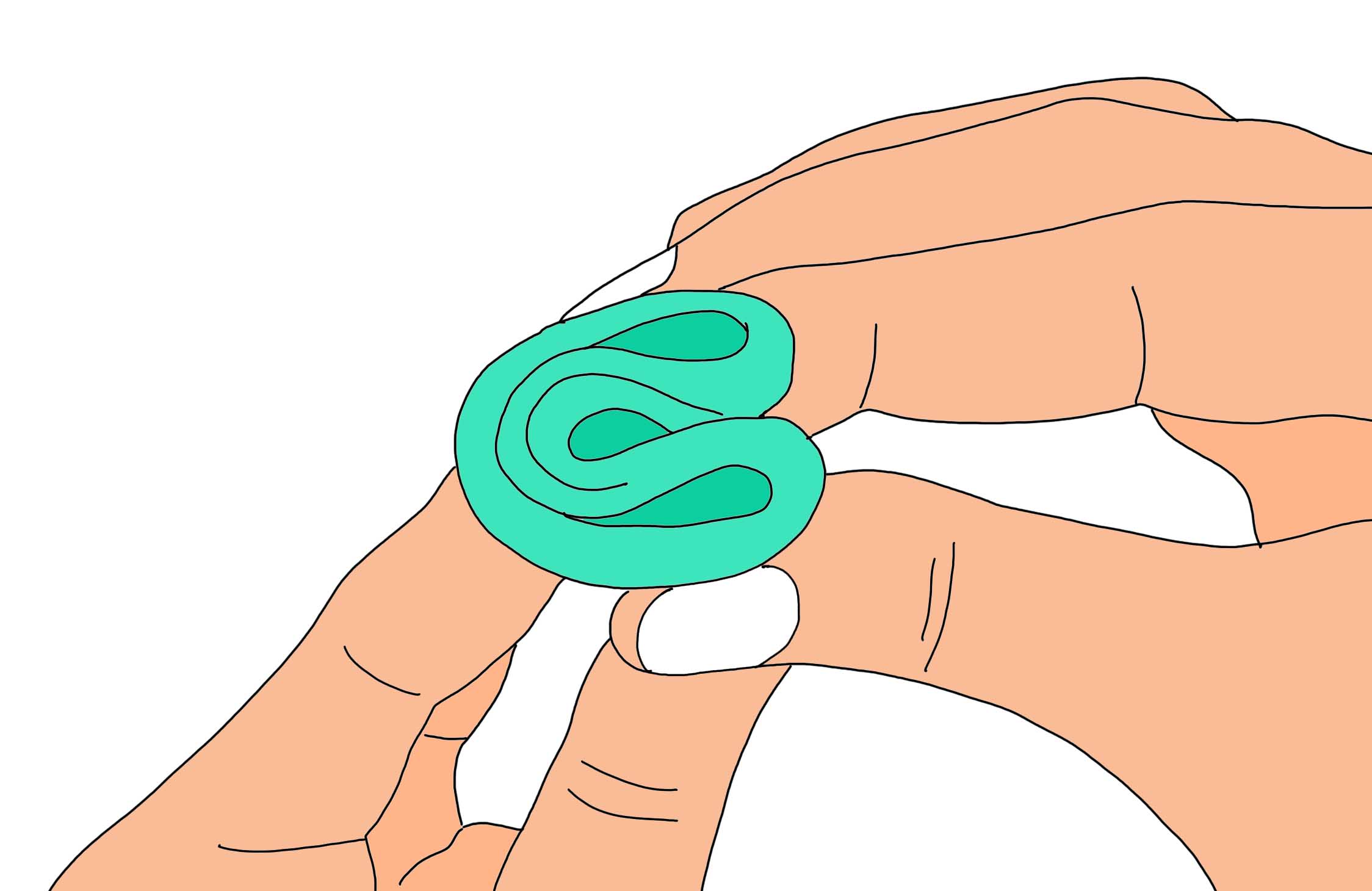
Pull out one thumb and hold the cup in the other hand between thumb and forefinger.
Punchdown fold / the shell
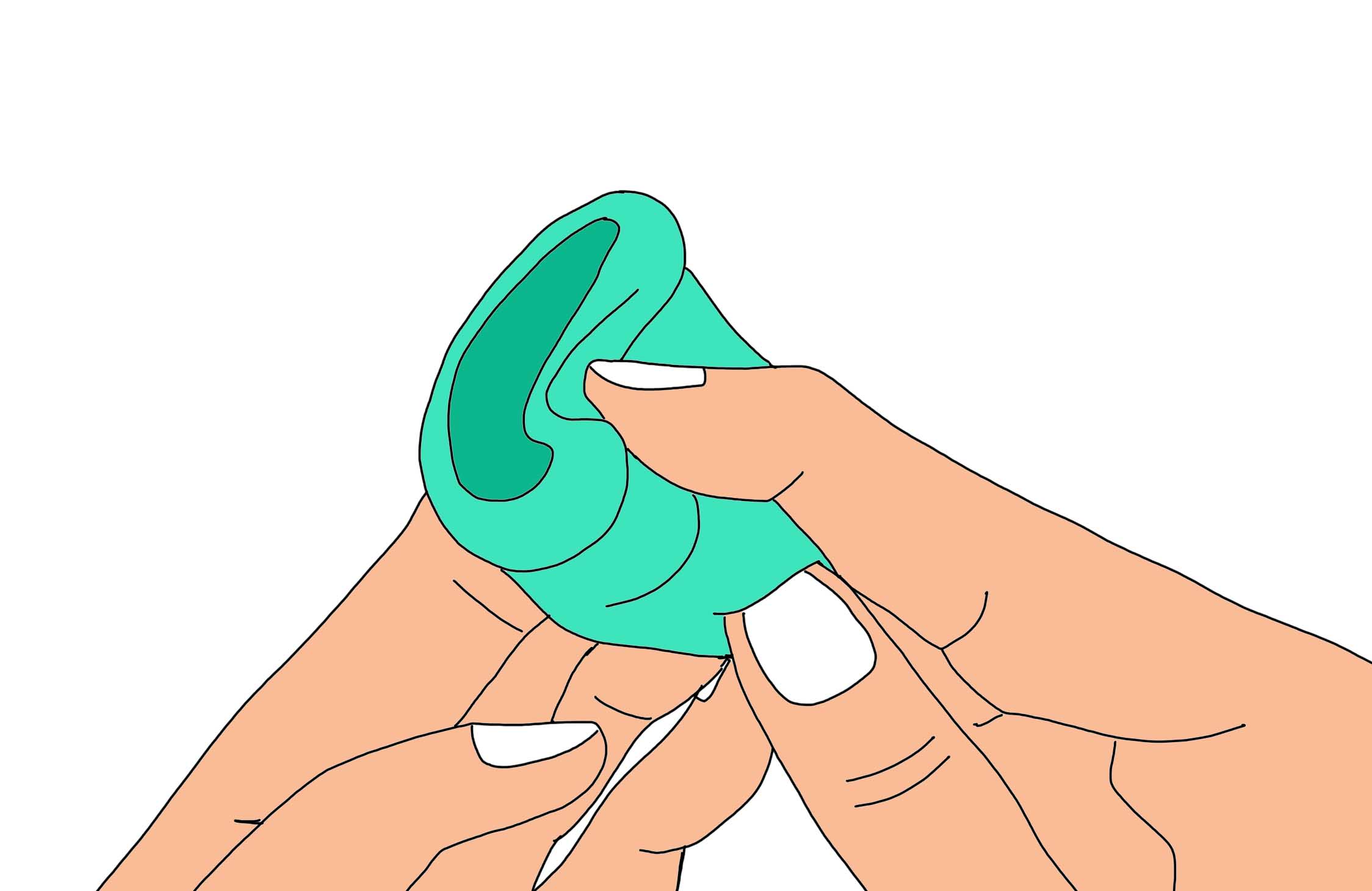
Press the centre of the silicone with your index finger.
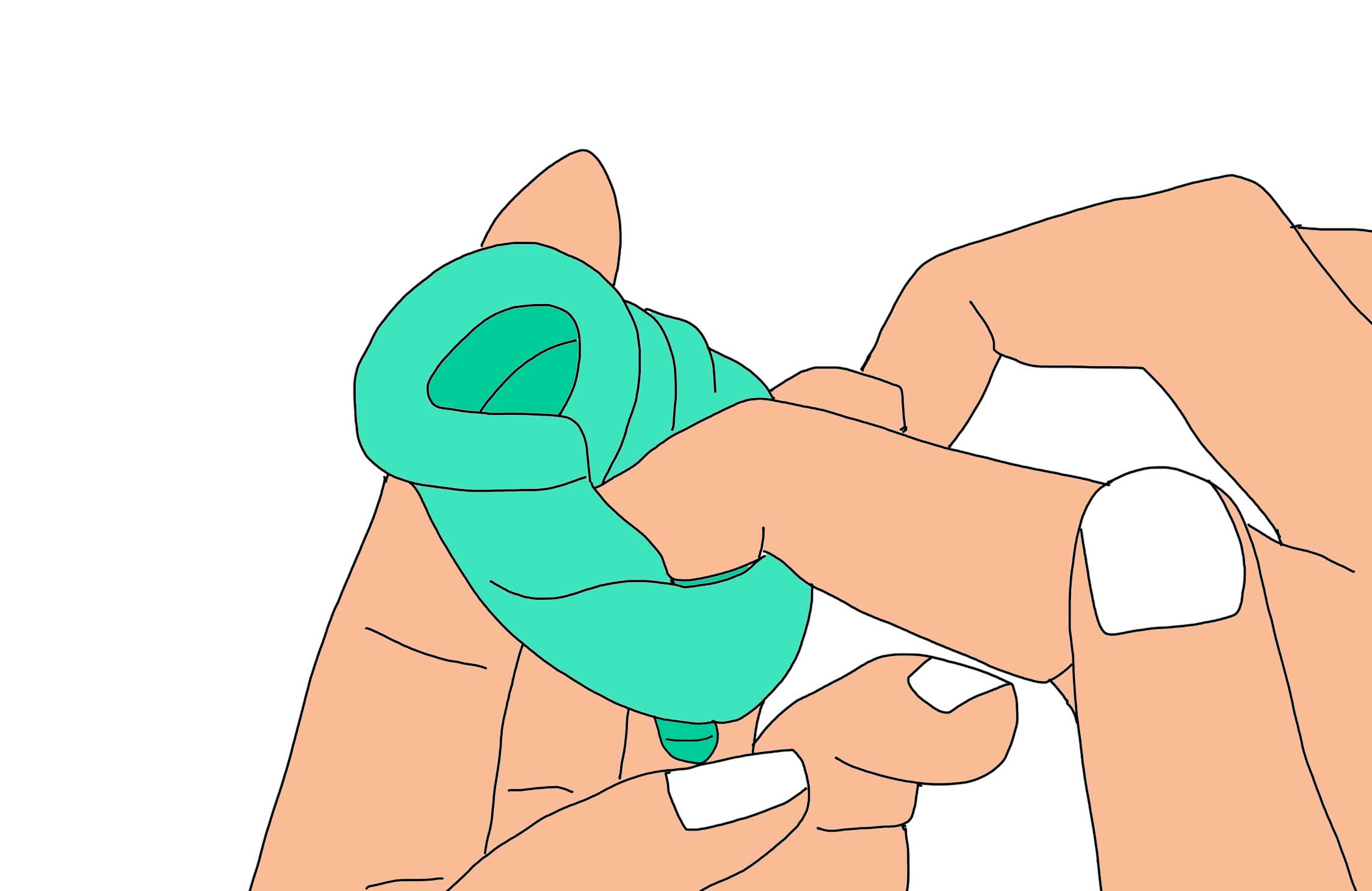
Now press the middle silicone area all the way down and press the two sides together using the fingers of the other hand.
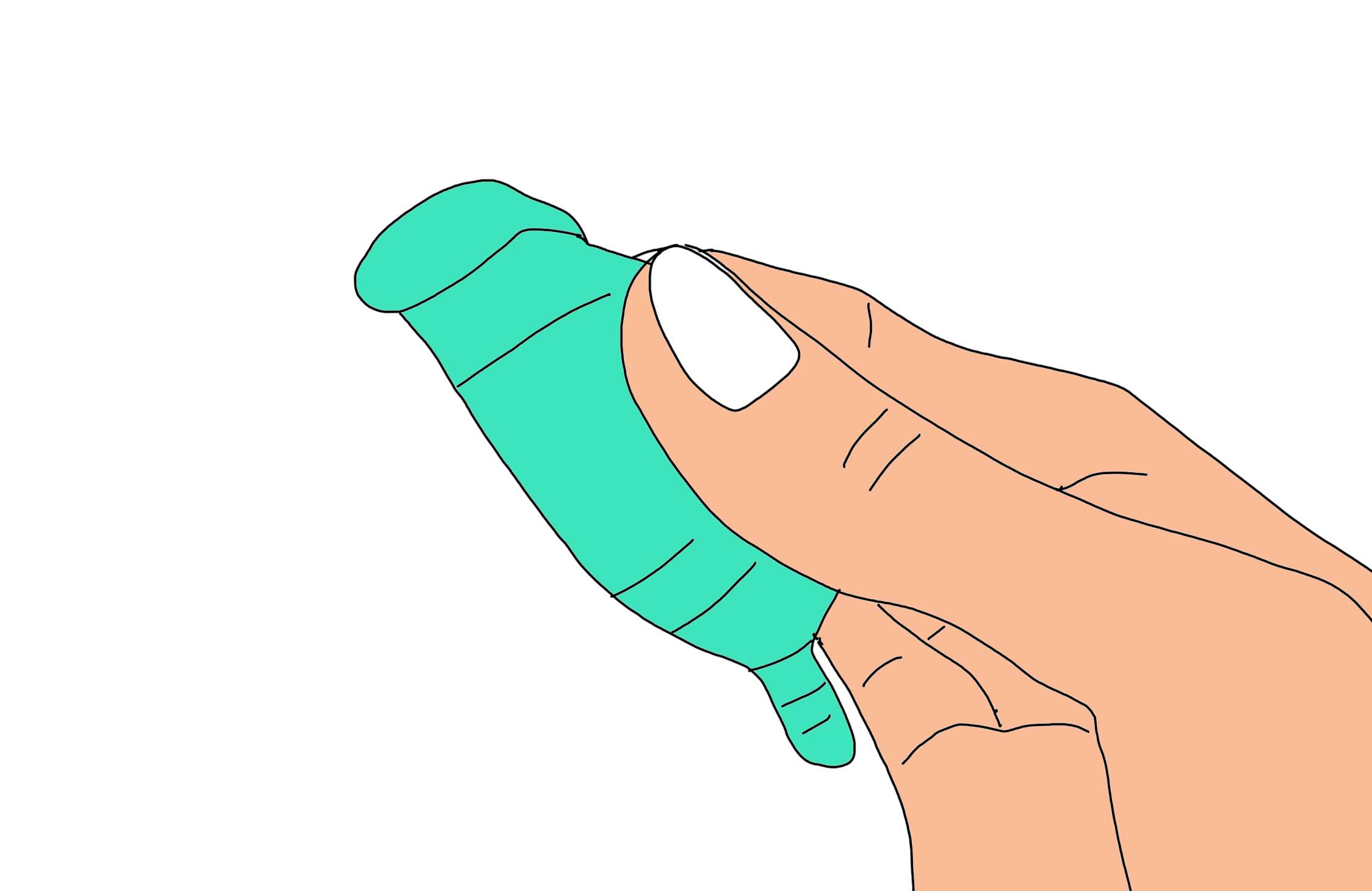
Hold the cup with the index finger and thumb of one hand to insert.
Fold off / the triangle fold
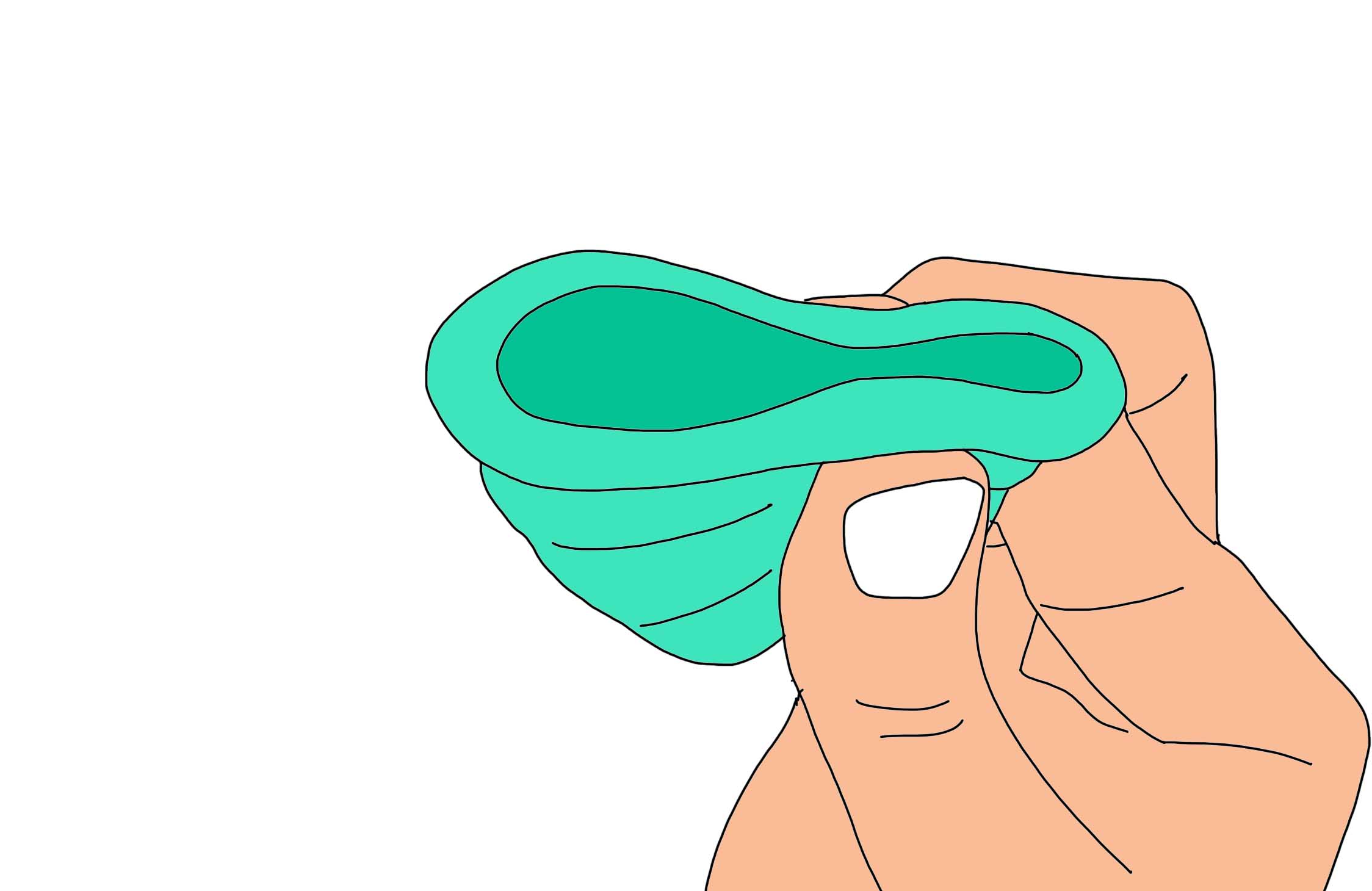
Hold the cup with both index fingers and thumbs and press the edge together with your thumbs.
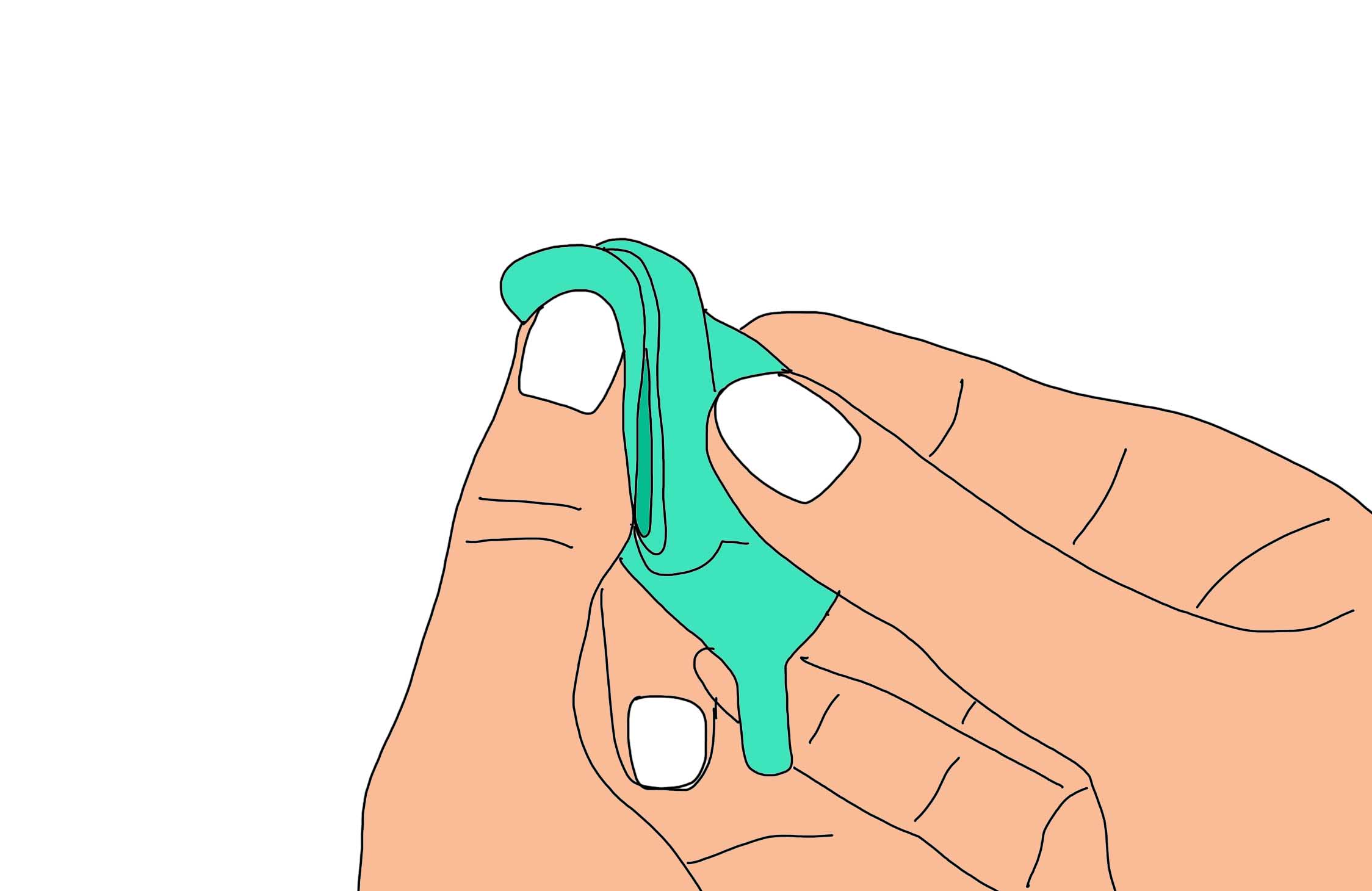
Now hold the cup in one hand and fold the silicone rim down diagonally with the other hand.
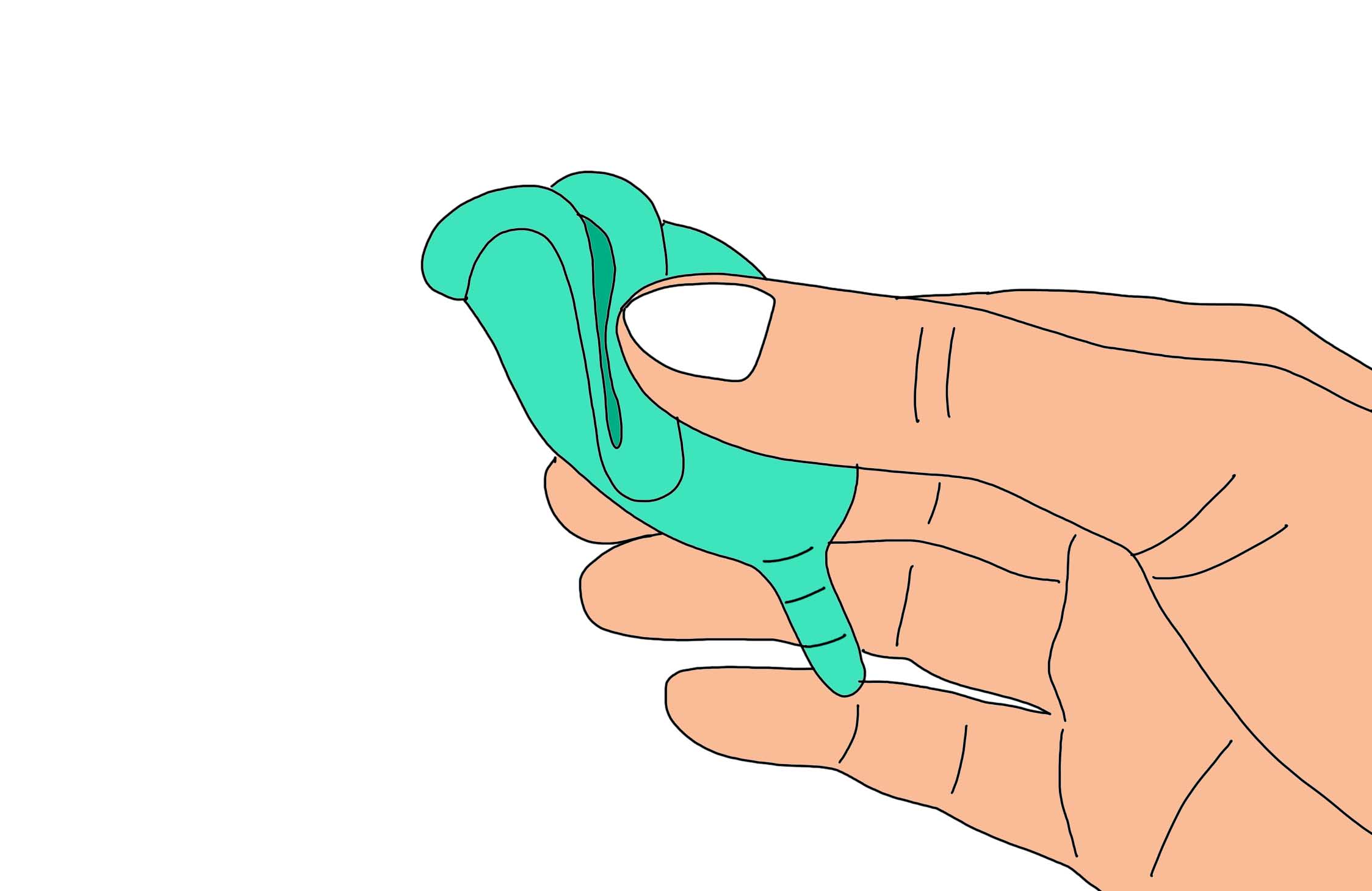
Hold the cup together with your thumb and index finger.
